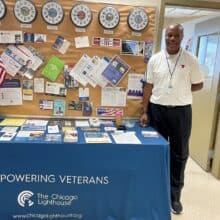Commentary: Accessibility in Business Should Be More Than An Afterthought
Commentary written by guest writer Tyler Bachelder
Did you know that businesses are letting over $8 trillion slip right through their proverbial fingers? Me neither. But Caroline Casey, an Irish disability activist does, and she wants to show them the money. That sum is the estimated amount of disposable income possessed by approximately a billion people with disabilities worldwide. She believes that with the right insight and guidance, businesses can begin tapping that money for their own gain. But this isn’t just a naked appeal to greed. It’s also good citizenship. It starts with a consideration for disabled consumers in the boardroom. She wants companies to know that they need to do more than pay mere lip service to accessibility. To her, this is a win-win situation. Businesses cater to the needs of disabled people, and in return they get loyal customers who feel appreciated and valued, plus the wallets that come with them.
Take a look around and you can see this ethos already paying off. The go-to example that most blind people would likely jump to is Apple. Apple has, through the entirety of its design process, considered the needs of disabled people, and it’s been revolutionary for us. Their suite of accessibility tools is comprehensive. The iPhone has screen magnification, LED flash to notify deaf users of alerts, image recognition to describe photos, the ability to type in Braille on the phone, shaped buttons for color blind users, guided access to minimize distractions for users with cognitive disabilities, and so much more. And those tools are generally replicated on a Mac. Apple is something of a prestige brand. Consumers pay a premium for its products. Often, disabled people don’t have as much money individually, due to lack of inclusion in the workforce. But, limited income aside, blind people flock to Apple devices no matter the cost. Why? Because Apple cares about their needs. For a lot of us, Apple is the brand, not a brand. Imagine, for a moment, what that means for this segment of the market. Apple has it largely on lockdown.
And that leads us to Casey and her mission. She imagines a world in which companies consider accessibility at all levels of operation, from supply to design to service to the built environment. That sort of consideration can engender a lot of loyalty from a demographic that often feels underserved and neglected. It’s also a clear win for public relations. Search Google News for Apple Accessibility and you’ll witness journalists frothing over how thoughtful, how philanthropic, and how cool Apple is for doing this work. What company doesn’t want that kind of public goodwill?
Let’s also remember that accessibility can benefit everyone, not just disabled people. How many times have you taken an elevator when stairs would work? Be honest, I won’t tell. You’ve had a bear of a day at work, the commute home is a nightmare, your feet hurt, all you want is to, for a second, be at rest. So into the elevator you go, and you’re grateful right? That elevator is intended for wheelchair users, but I’ll bet what’s left of my eyesight that you’re thankful for those precious thirty seconds of stillness, aren’t you? That’s accessibility at work.
Casey wants companies to realize that the investment of time and money into accessible products and services pays dividends both financially and in the court of public opinion. Too often, due to a lack of education about what it means to be disabled or what it would take to improve the status quo, businesses neglect it altogether. If informed at all, they’re usually misinformed, mistakenly believing that these considerations would be prohibitively expensive. For instance, minor changes like high contrast colors in design, larger signage, appropriate lighting, products that feature tactile elements, websites built with screen readers in mind, digital versions of manuals, TTY phone numbers, most of these things are insignificant changes with very little cost attached. And it’s much less expensive to design while considering accessibility, rather than retrofitting something later, because often if you change one small feature, others must change to make way. I’m thinking here of buildings built before the passage of the Americans with Disabilities Act, specifically, but the principle applies generally too.
So Casey plans to travel to Colombia and ride horseback across the country, all the while documenting her journey on social media. The #valuable campaign is meant to educate, rather than cajole. At the end of her journey, she will beseech over 500 companies to consider their lost money. Let’s hope this effort can create at least one more Apple in the world. The changes won’t happen overnight, but there is momentum. I’ll be in the elevator, waiting for the doors to open on a brighter future.

Sandy Murillo works at The Chicago Lighthouse, an organization serving the blind and visually impaired. She is the author of Sandy’s View, a bi-weekly Lighthouse blog about blindness and low vision. The blog covers topics of interest to those living with blindness and vision impairments. Being a blind journalist and blogger herself, Sandy shares her unique perspective about ways to live and cope with vision loss.





